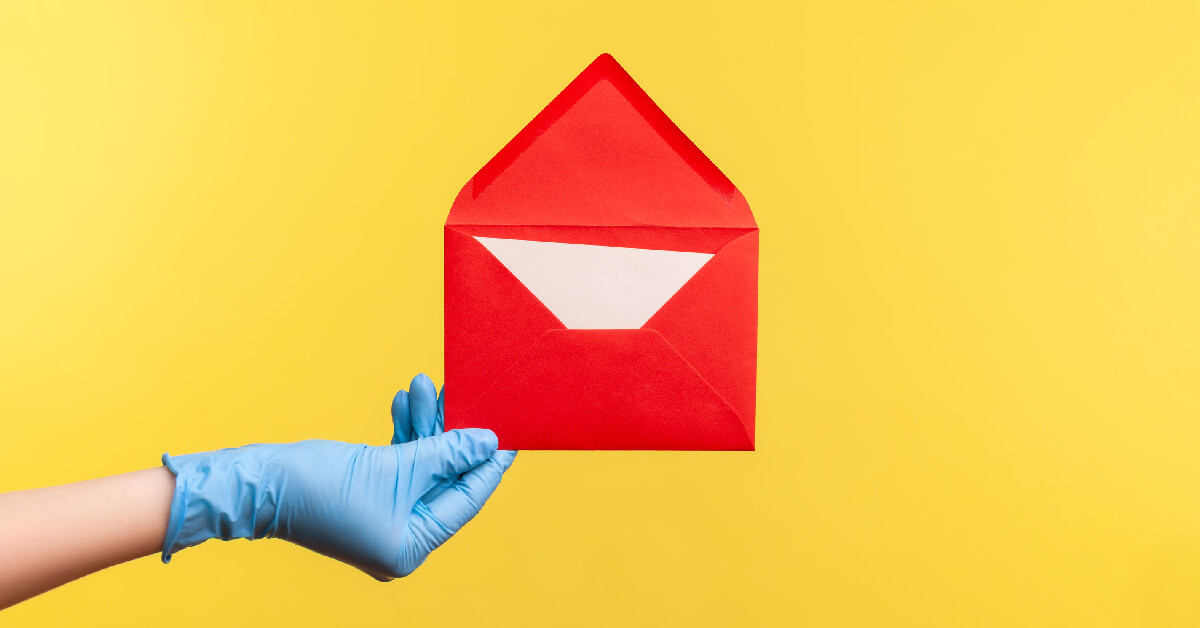A cold email is a message sent to a potential lead with whom you usually have no prior relationship and who is not expecting your email. Considering the average worker receives 126 emails per day, they likely don’t have time to read your message. So how do you stand out? This is the first article from a short series on how to craft messages that ultimately help you sell.

There are many ways to improve your cold emails and get more responses. Better messages and more engagement result in driving more qualified leads into your sales funnel. Use these best practices to create messaging that resonates and engages in more powerful ways.
Don’t ignore research
Some companies buy email lists or acquire them when they present at conferences or events. The outreach team then methodically works through the list sending similar emails each time, regardless of whether the company would actually be a good fit for their services. While the spray and pray method of cold emailing is a good way to hit your daily quota for messages sent, you risk sacrificing quality over quantity. And losing leads in the process!
You can’t ignore research, even if you are working from a purchased list. This helps in a few ways:
- It saves you time by allowing you to identify unqualified leads.
- It helps you find information that allows you to connect with the lead.
- It makes it easy to create a tailored message that targets their specific needs.
Sending well-researched emails each day takes more time, yet it can drive better results. According to Woodpecker, the open rate of an email that had advanced customization (not just a recipient name and company) is 17 percent. Emails without such customization had an open rate of only 7 percent.
Get to the point
The people you choose to cold email did not subscribe to your newsletter. They aren’t looking to read several paragraphs about your brand or what you do. Your email recipients want to know who you are and what you’re trying to sell them quickly.
Your audience wants you to get to the point fast. This means it’s important that you keep your body copy short. In the same way, you want to use this opportunity to simply gauge their interest and get them to schedule a call or click a link.
To cut down on your emails and create more targeted content, draft an elevator pitch that sums up your offerings in one to two sentences. Make sure your recipients can immediately see if your business is relevant to them. Also include any relevant data or client testimonials that show you already know why your partnership would work.
Once the recipient is interested, you can move into longer explanations of what you do and why it is valuable. However, the main focus of your cold email is to simply grab someone’s attention and start a conversation.
Remove the jargon
Does your company optimize processes to influence corporate synergy? So does every other brand in modern America. Too often, sales teams fill their cold emails with key branding terms and company jargon without really getting to the root of what they do.
“Having studied organizations up close for two decades, I know business people fall prey to meaningless jargon from time to time,” says André Spicer, professor of Organizational Behavior at Cass Business School in London. “I also knew that while this might satisfy a momentary need, empty talk usually winds up annoying bosses, team members, and clients.”
Consider removing some of the worst offenders from your emails. According to Verizon, these include:
- Analysis paralysis
- I’ll ping you
- I’ll run that up the flagpole
- Behind the 8 ball
And beyond these fine no-no examples, let me add the most annoying of them all:
- Trust my email finds you well – No, it never does! I wasn’t expecting that email, haven’t asked for it and I only read it if anything at all catches my eye. So stop trusting and get to work in crafting better messages 🙂
- Pick your brain – No, you can’t pick anything!! Jokes aside, this is an awkward, totally undesirable choice of words.
To put your cold messages through a mental jargon filter, ask yourself: which words add fluff? Which phrases don’t actually describe what you do?
Removing these bits and focusing on your actual products or services can increase your response rate and help you to actually connect with the recipient.
Choose your send times wisely
Choosing the right time can increase your cold email response rate. You may be tempted to work weekends or stay late on a weeknight. However, the emails you send then are more likely to be ignored. And this ends up being a waste of your time.
A research from Hubspot in partnership with GetResponse shared the best times and dates to send email messages based on 1,000 active senders. They found that 10 am and 1 pm have the highest open rates, along with 6 pm. Tuesday and Thursday are also the highest performing days.
This data makes sense when you consider that working professionals are catching up on work on Monday and wrapping it up on Friday. If your job is to send pitch emails throughout the day, look into a scheduling software that will deliver them at certain times. Then check the data and optimize, sending only at the times when you see the highest ROI.
Craft key messages that sell
If you’re sending dozens or hundreds of emails with a minimal or zero return rate, now it’s the time to make some changes.
Use these ideas to hone your messaging and strategy so you can achieve your goal of converting leads into paying customers.
Post A Reply